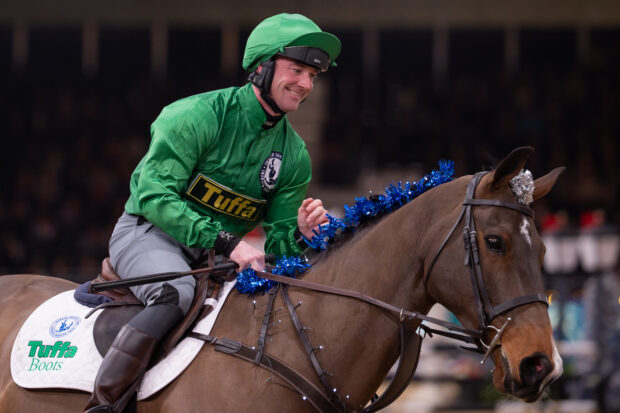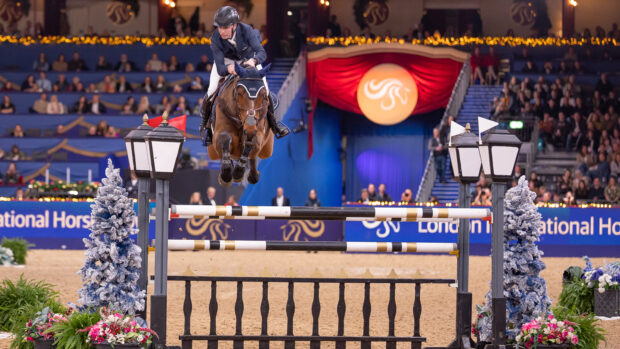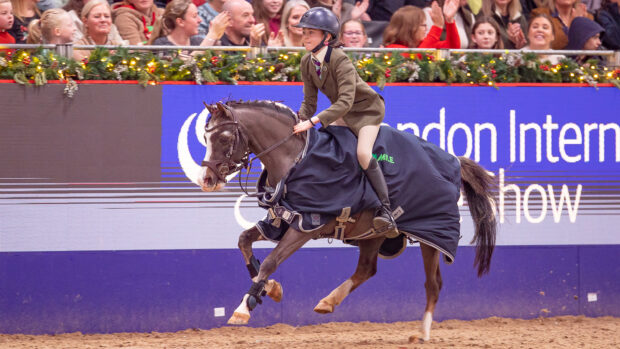Welcome to Horse & Hound‘s live and interactive text commentary from the grand prix dressage competition, supported by Horse & Hound, at the 2016 London International Horse Show at Olympia. H&H dressage editor Alice Collins and H&H magazine editor Pippa Roome were on hand to provideup to the minute written commentary from Tuesday night’s grand prix competition, which was won by Carl Hester riding Nip Tuck.
The show hosts a leg of the FEI World Cup dressage series, which comprises a grand prix on Tuesday night and a freestyle to music on Wednesday evening. The grand prix is a qualifier for the freestyle, and is a set test in which horses have to show the basic movements, plus piaffe and passage in a predetermined sequence.
The current world record for the grand prix set test is held by Britain’s golden duo of Charlotte Dujardin and Valegro, whose performance at Olympia in 2014 earned a gigantic 87.129%. The pair will feature in a retirement ceremony on both nights of this year’s show.
Among the hardest movements in the grand prix is the canter zig-zag. The horse and rider come down the centre-line from A and ride a pattern on three, six, six, three strides in canter, changing direction with a flying change.
The balance and precision required to execute this movement well is demanding. The hardest movements in the test have a coefficient of two, so are effectively out of 20 instead of out of 10.
The walk section is also double marked, both for the extended walk and the collected walk that follows immediately thereafter. To score well in all the movements that demand a high degree of energy often compromises the grand prix horse’s ability to walk with relaxation, which is why this part of the test is considered so tough.
The flying chances — both the two-times and the one-times — are also double marked.
The final centre line carries around 10% of marks in the test as there is a mark for passage, piaffe, transitions, the second patch of passage and the final halt — plus the piaffe at X is double marked, and happens right in front of the judges on the long side, who will be watching carefully to see how on the spot the movement is.




